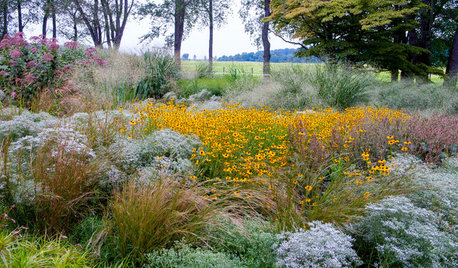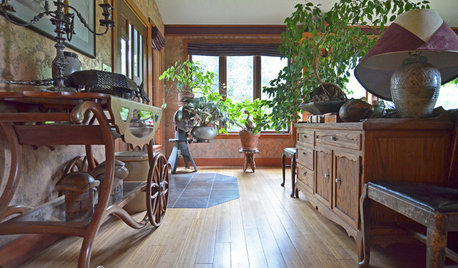grape skeletinizing beetles ...
vieja_gw
10 years ago
Related Stories

GARDENING AND LANDSCAPINGBid Bad Garden Bugs Goodbye and Usher In the Good
Give ants their marching orders and send mosquitoes moseying, while creating a garden that draws pollinators and helpful eaters
Full Story
GARDENING GUIDESWe Bust 4 More Native Plant Myths
Have you been taken in by these fallacies about gardening with native plants?
Full Story
GARDENING FOR BIRDSFeed the Birds: 6 Plants for Abundant Winter Berries
Be kind to your fair feathered friends during lean food times by planting a shrub or tree loaded with nutritious snacks
Full Story
EDIBLE GARDENSHouzz Call: What Did You Grow This Summer?
Let’s celebrate the homegrown fruits and vegetables of the season. Post your pictures and tell us about your harvest
Full Story
TREES7 Deer-Resistant Flowering Trees to Plant this Fall
If you live in a neighborhood with roaming deer, consider these beautiful trees that won't tempt hungry guests
Full Story
EDIBLE GARDENSSummer Crop: How to Grow Blueberries
Plant blueberries in spring or fall for garden beauty through three seasons — and a sweet superfood in summer
Full Story
LIFEHow to Outsmart Backyard Critters
Learn to think like a raccoon, skunk or squirrel to keep your home safe and your garden intact
Full Story
GARDENING GUIDESThe Surprising Ingredients Every Good Garden Should Have
See what to do — and not do — for lasting rewards in your landscape
Full Story
MY HOUZZMy Houzz: Pursuing Their Life’s Work in Rural Oregon
This creative couple craft a live-work world all their own in the high country of eastern Oregon
Full Story
FLOWERSGreat Design Plant: Lilies
Try these delightfully exotic stunners for paintbox colors, deep fragrance and intricately detailed petals
Full StoryMore Discussions







Fascist_Nation
Fascist_Nation
Related Professionals
Owings Mills Landscape Architects & Landscape Designers · Roxbury Crossing Landscape Architects & Landscape Designers · Cambridge Landscape Contractors · Concord Landscape Contractors · East Hanover Landscape Contractors · Florham Park Landscape Contractors · Fountain Valley Landscape Contractors · Hurricane Landscape Contractors · Kaysville Landscape Contractors · La Mirada Landscape Contractors · Raleigh Landscape Contractors · Saint Paul Landscape Contractors · Tacoma Landscape Contractors · Tewksbury Landscape Contractors · Vermilion Landscape Contractorslarry_gene
jean001a
vieja_gwOriginal Author
larry_gene